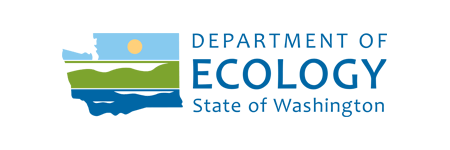Issue Brief
How Can Cities and Counties Plan for all Transportation Modes?
Planning for all the ways people travel improves people’s transportation choices and their ability to access jobs, shopping, health care and other services efficiently and safely. Some modes of travel, like walking and biking, can also improve the health and economic vitality of the community and reduce environmental impacts. When planning for all transportation modes available in communities, it is also important to consider the needs of different types of travelers such as commuters, students, tourists, farmers, freight haulers and people with disabilities.
View the brief.
Webinar
Best Practice Actions
- Invite partners responsible for or interested in other transportation modes into your planning process.
- Engage the public and other stakeholders to develop goals and adopt policies that support an integrated, multimodal network.
- Select performance measures that balance available or planned transportation modes and evaluate the best investments across the network.
- Use models, maps, field surveys and other data collection tools to identify connection opportunities for each transportation mode and gaps in the multimodal network.
- Identify strategies and analyze alternatives.
- Establish agreements to improve connectivity among the different transportation modes.
- Implement the plan, including supportive community design and street networks.
- Design communities that encourage active transportation (e.g. buildings that face the street; careful consideration of access points and circulation to ensure safety for all modes, etc.)
- Design a supportive street network (e.g. grid-style network)
- Consider the needs of rural transportation system users and freight haulers.
Benefits of Integrating Planning for All Modes
- Reduces environmental impacts and carbon footprint.
- Improves land use efficiency, health, and economic vitality.
- Improves people’s transportation choices and their ability to access jobs, shopping, and services efficiently and safely.
While revenue for multimodal transportation improvements is in short supply, greater multimodal integration maximizes transportation infrastructure and land use efficiency through high-benefit, low-cost investments to facilitate operational efficiencies, demand management programs, and improve existing facilities instead of constructing expensive new facilities.
Tools & Resources
Web Resources

-
Bellevue Transportation Element
Tailors level of service standards based on community goals and the context of mobility management areas that reflect street patterns and connectivity, available mobility options, topography, development patterns, and land use objectives.
-
Bellingham Complete Networks
An approach that uses multimodal concurrency measures to support planning for a multimodal transportation system including bicycle, pedestrian, transit, multi-use trails, vehicle and freight components.
-
Downtown Colville US-395 Context Sensitive Design Project
A partnership between WSDOT and the City of Colville to address freight mobility needs while contributing to a healthy and vibrant downtown business district.
-
Issaquah Transportation Element
Prioritizes non-motorized and transit-oriented mobility improvements and design elements and uses traffic impact fees and pedestrian and bicycle mitigation fees to address the impacts of development on the multimodal transportation system.
-
Kirkland 10 Minute Neighborhood Analysis
A tool to help the community talk about what it means to be livable, walkable, sustainable, connected, and transit-oriented.
-
Redmond Transportation Master Plan
Addresses each major element of a complete multimodal transportation system for Redmond including plans addressing the street system, transit system, pedestrian system, bicycling system, parking, transportation demand management, and freight mobility.
-
Bellevue Pedestrian and Bicycle Implementation Initiative
-
Bellevue Transit Master Plan
-
Everett Evergreen Way Revitalization Plan
-
Issaquah Walk ‘n’ Roll Plan
-
Kendall Yards
-
Lacey Woodland District Plan
-
Seattle Pedestrian Master Plan
-
Shoreline Transit Oriented Development
-
Sustainable Thurston Plan
-
Vista Field Redevelopment Plan
-
Whatcom County Smart Trips
PDF Resources

-
Carnation Tolt Avenue Action Plan
A small town example of planning for layered multimodal networks, wayfinding, and placemaking along a corridor.
-
Wenatchee Waterfront Subarea Plan
A plan to connect downtown Wenatchee to the Columbia River trail system by redeveloping the former industrial area into a high density mixed use district.





